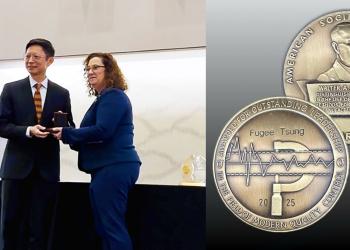HKUST-Harvard Scientists Discover Ways to Clock the Beginning of the Universe
Scientists from HKUST and Harvard-Smithsonian Center for Astrophysics discovered a method to observationally distinguish different theories of how the universe first began at its very early stage. The findings were accepted by the Journal of Cosmology and Astroparticle Physics.
The expansion of our current universe has been established for almost a century. However, concerning much earlier stages of our universe as how it began has always been a topic of contention among scientists. The most widely-accepted theory of the primordial universe is cosmic inflation, during which the universe was expanding at an extremely fast and mounting rate. On the other hand, there are also contending theories which believe that our infant stage universe was fast contracting, slowly contracting, static or slowly expanding.
While it is known that the above scenarios of how the early stage universe began all exist, there has not been a clear way to distinguish those scenarios from observations. Without a chronological way to label the primordial stages of the universe, scientists could not know whether the primordial universe was expanding or contracting.
Prof Yi Wang, Assistant Professor of HKUST’s Department of Physics and his collaborators Prof Xingang Chen and Mohammad Hossein Namjoo from the Harvard-Smithsonian Center for Astrophysics note that some heavy particles that are known existing at the birth of the universe can be used as standard clocks; and with the time reference set by the clocks, the primordial stages of the universe can be labeled with time and thus the expansion or contraction history of the primordial universe can be reconstructed.
The research paper proposes that the time of every primordial era can be labeled, such that new observations shall be like a movie, which shows in time order how our universe comes from.
“From observing the oscillation of the massive particles, we are able to reconstruct when fluctuations are created in the primordial universe,” says Prof Wang. “Soon, we may be able to verify the evolutionary history towards how our universe was created, which has remained a myth for so long.”
For media enquiries, please contact:









